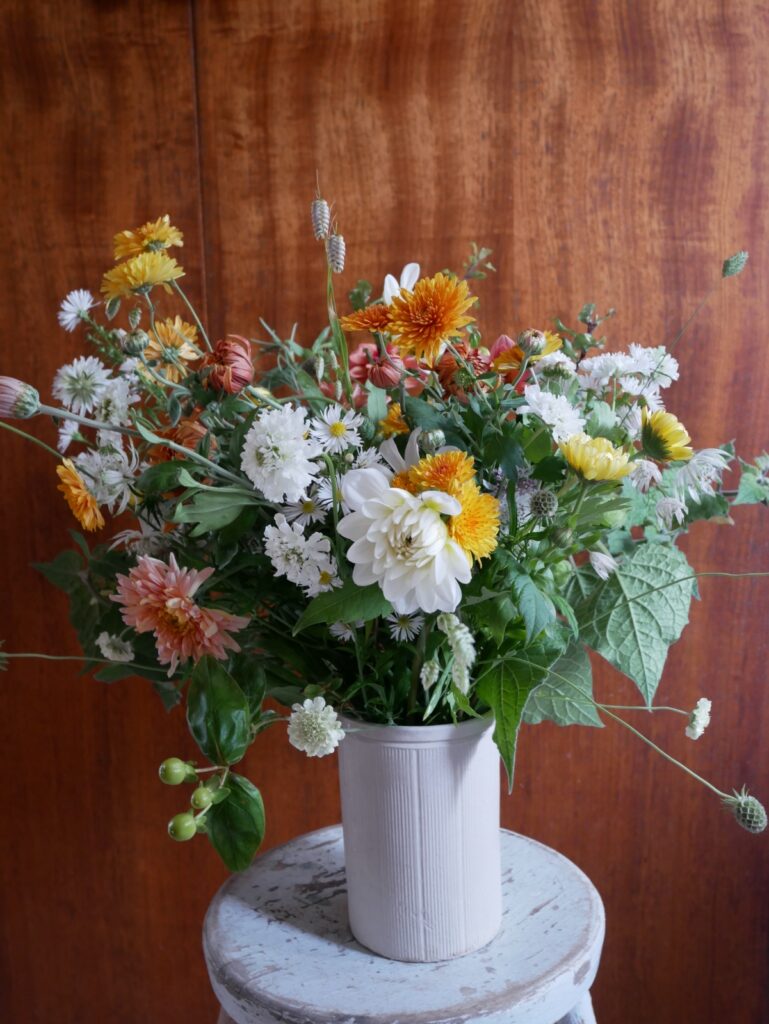- I don’t use peat, pesticides or herbicides (weedkillers).
- Water is collected from gutters and stored in butts.
- Soil health and conservation is achieved by feeding the soil lots of compost, both homemade and bought in peat free as well as liquid and granular seaweed.
- Local deliveries are often made by bicycle with a specially designed trailer.
- Packaging is minimal and recyclable, reusable or compostable. Gift cards are made from recycled card.
- All plastic pots, trays etc are reused many times, and single use plastics are avoided.
- I use sustainably harvested moss, chicken wire and string to avoid using floral foam and make my floristry designs as “eco friendly” as possible.
In my flower patch, there are plants that help support wildlife, something for the bees (lots of flowers for a start!), shrubs & trees for birds and red squirrels to live in, along with piles of leaves and bowls of water for the hedgehogs. Seasonality is very important, I love looking forward to flowers blooming; there is always something gorgeous to treasure in any season.
Why British Blooms?
Britain used to be pretty much self sufficient in the cut flower growing department. Trains carried scented Cornish Narcissi (daffodils) all over the country, tiny bunches of Sweet Violets were given as presents and Chrysanthemums were grown in market gardens across Lancashire. Since the Second World War, this trade has been dwindling. Today, as little as 15% of cut flowers sold in this country are grown in Britain. The majority of flowers are shipped to Dutch flower auctions from various countries and could have been picked over a week before they reach your average florist shop or supermarket.
Sadly, the range of varieties of flowers available is limited because imported flowers have to be sturdy enough to withstand long journeys. Most imported varieties have sacrificed scent for longevity. I believe, along with many other British growers that this trend can be changed.

Scent in Flowers
Most imported varieties have sacrificed scent for longevity. The scent contributes to how soon the flower lasts once cut, and an imported flower has to last so much longer to make up for the travel time.
The first thing people usually do when handed a bunch of flowers is to stick their nose in it and have a sniff. When I’m browsing the seed catalogues the first thing I do is look to see if it is a scented variety; scents are so evocative, and create memories and this is really important to me.
The Sustainable Wedding Alliance
I’m pleased to share with you that in an effort to develop my business into a more sustainable model, I have joined the Sustainable Wedding Alliance.

